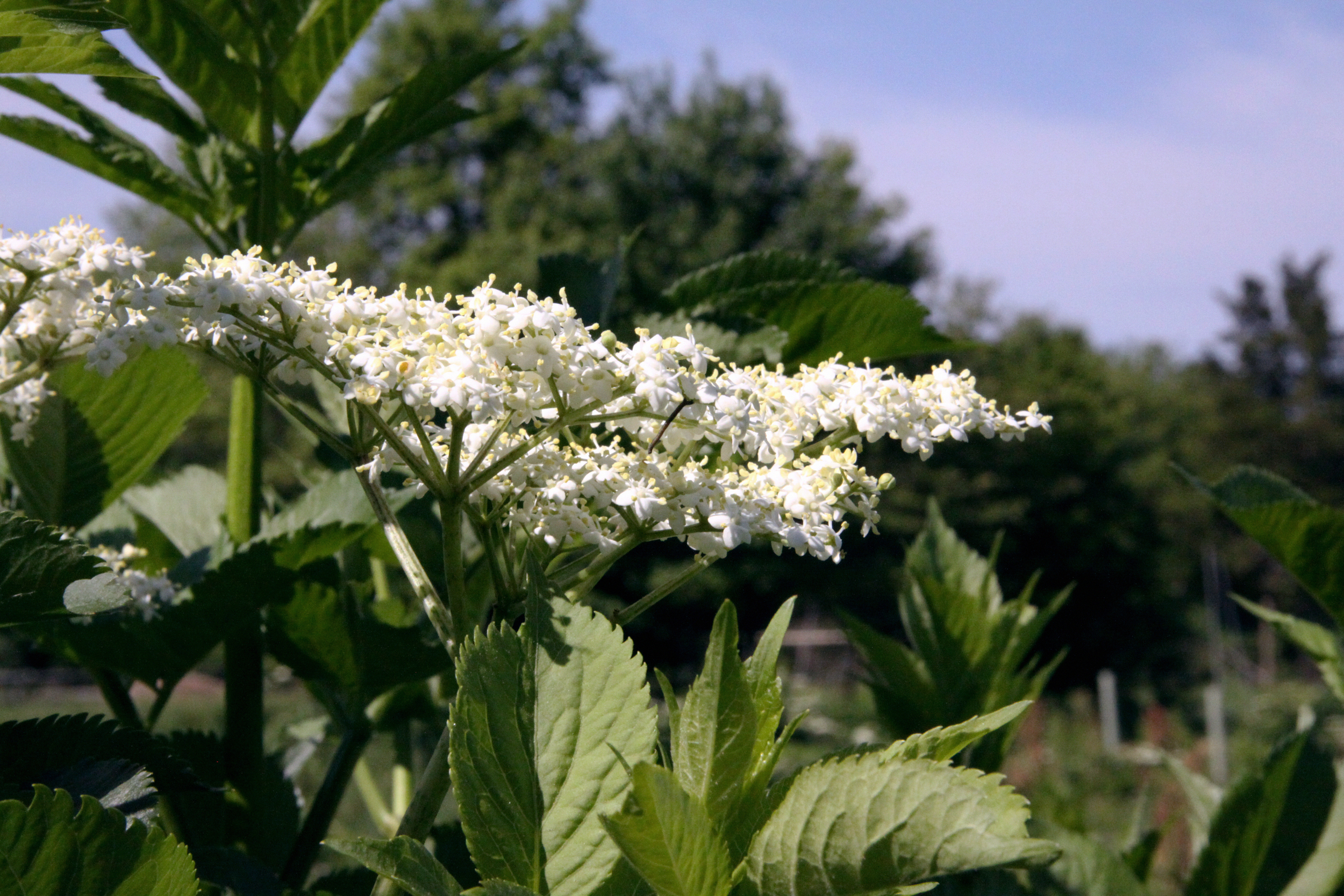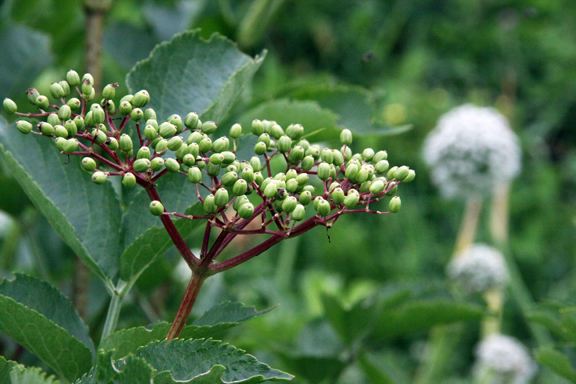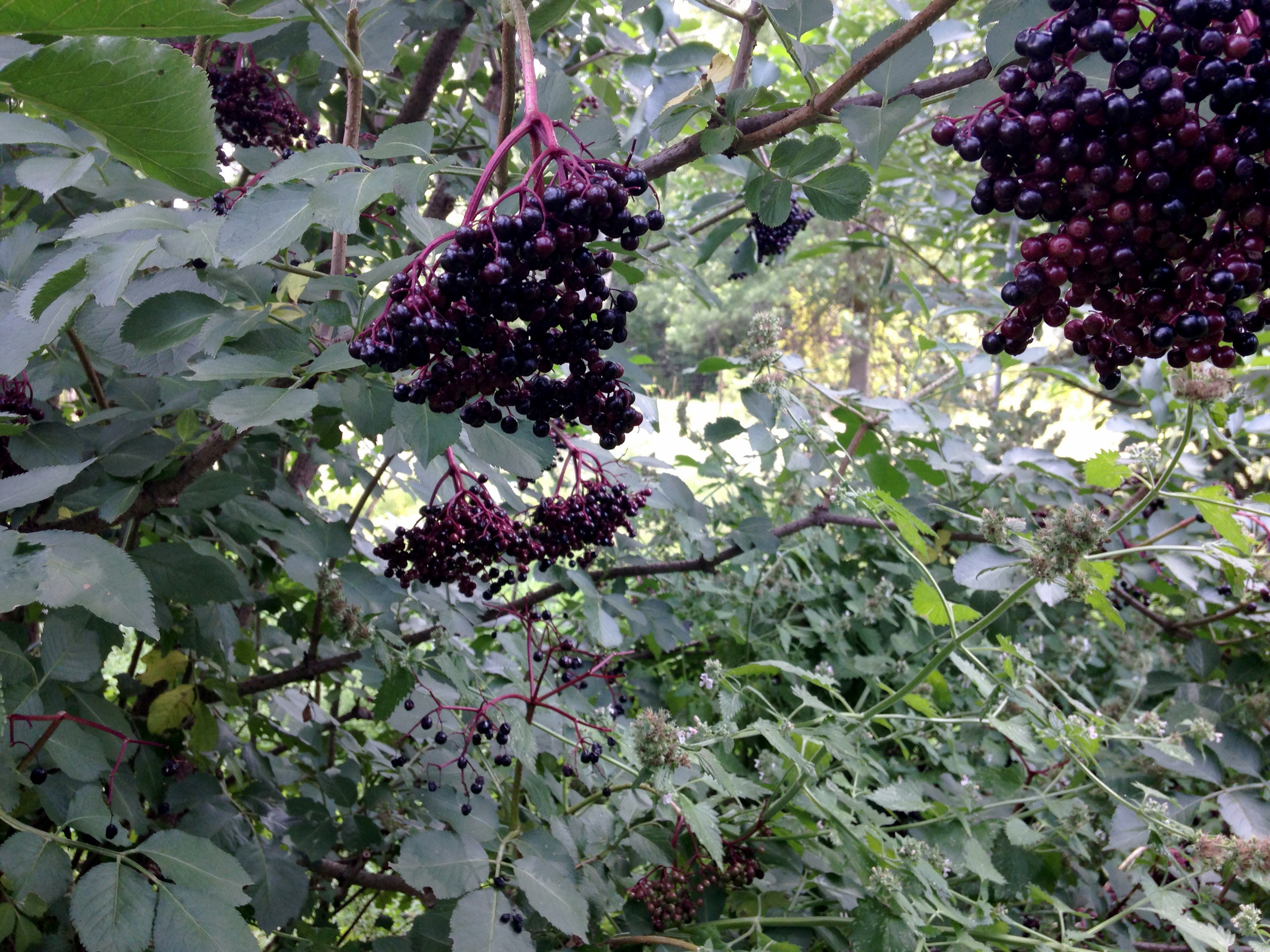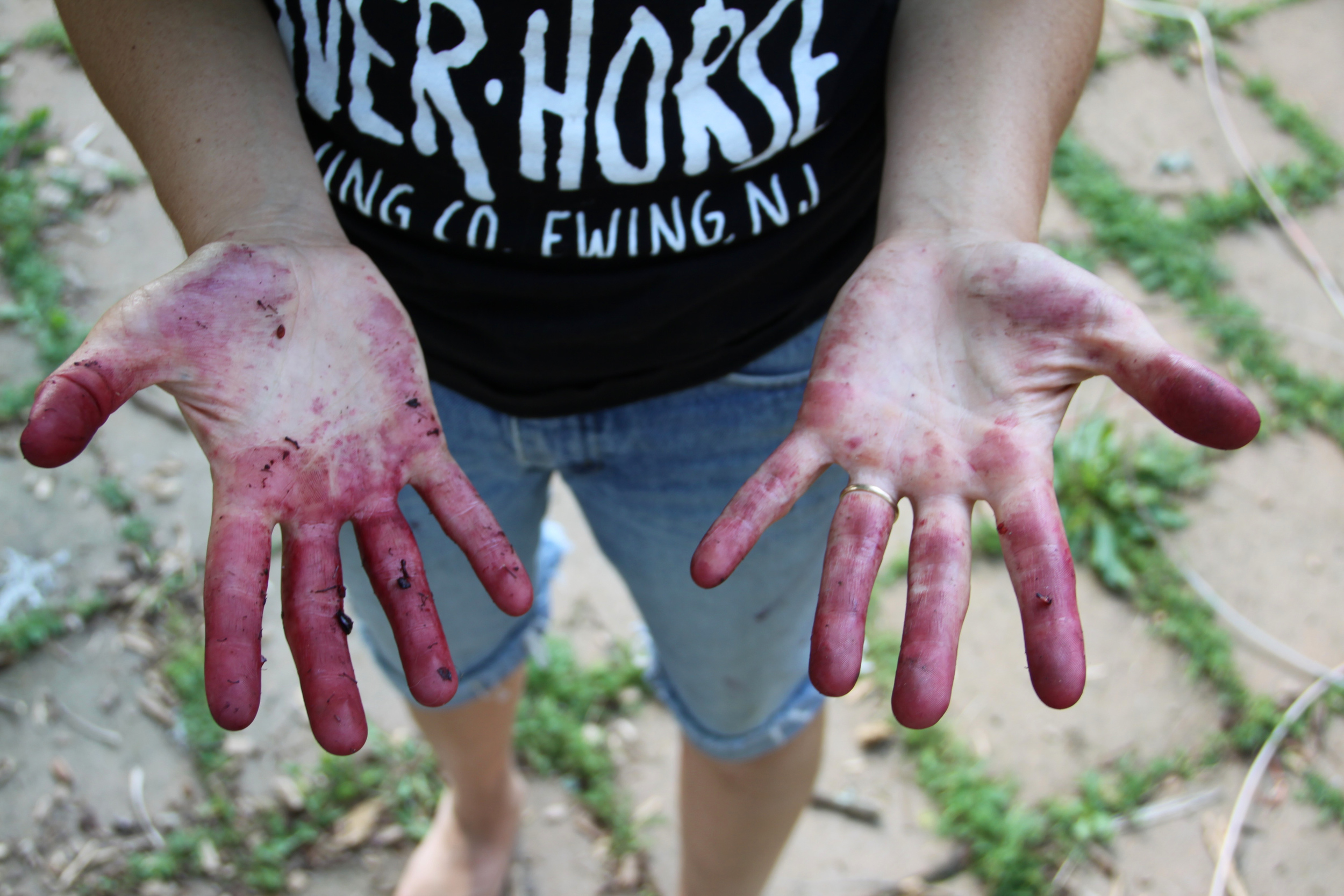The Medicine of the Elder
/



Elders of the Garden
In the days leading up to Summer Solstice the elder makes a showy bloom. Tiny white flower clusters perch atop a flat upright umbel, and the bright floral orbit holds up a mirror to the high sun. As the long days of summer begin to shorten the petals fall and are replaced by green swelling berries that turn darker with each longer night. By August the berries are a deep purple and dark as the midnight sky. Plump and juicy, and heavy in their clusters, the elder branches that once greeted the sun filled sky now bend their fruiting umbels toward the earth. The arc of time and space and season manifest in the medicine of the elder.
Over a period of several weeks in August we harvest elderberries in the heat of the last blazing days of summer. We patiently separate each small berry from its stem until our hands are stained a deep hypnotic purple, a semi permanent tattoo; the mark of the elder. We stop short of harvesting all the berries, anything above arms reach is for the birds, anything shriveled, overripe, and full of seed is for the earth.
Tradition & Folklore
Our most prized plant, the slow medicine of the elder has been used throughout the world for thousands of years. Gentle medicine for children and elders, yet powerful enough to subvert influenza, the elder has been revered for the strong medicine derived from its leaves, flowers, berries, and bark. The rich and diverse pharmacopoeia gleaned from the elder is rivaled only by the rich and diverse tradition and folklore associated with this plant.
In North America, the Algonquin used an infusion of the bark as a powerful emetic and laxative. The Cherokee used an infusion of the berries to treat rheumatism, an infusion of the flowers to “sweat out” a fever, and a poultice of the leaves to dress infected wounds. The Chippewa, Choctaw, Creek, and Iroquois, all have similar traditional uses for the elder. In medieval Europe the peasant people would bring offerings to the elder each spring for blessings of healthy crops and healthy medicine. The offerings were intended for the “Elder Mother” whom is said to dwell at the base of the plant, the tree itself a portal into her underworld dimension; a magical fairy realm.
Medical Research
Some magic of the elder lives in the esoteric realm of metaphor and lore, while other magic can be revealed through the lense of modern research. Elderberry has traditionally been used to treat influenza, colds, as well as other viral infections. In a randomized, double blind, placebo-controlled study in 1999, elderberry extract relieved patients suffering from influenza A and B symptoms on average 4 days earlier than placebo. In 2007, a similar randomized control study confirmed a proprietary elderberry extract reduced influenza symptomatology in study participants by four days. Laboratory studies have also shown elderberry’s activity in treating human respiratory bacterial pathogens and viruses. In an in vitro assay with human influenza A virus particles, the mechanism of elder’s preventative effect on the immune system is demonstrated; the flavonoids in the elderberry extract prevented the entry of virus into the host cell, thereby inhibiting successful viral infection.
Beyond preventing and treating symptoms of cold and flu, elderberry has been employed by herbalists, naturopaths, and homeopaths for treating a variety of conditions including anemia, rheumatism, respiratory conditions, and digestive upset. Elderberries contain significant amounts of vitamins A and C, calcium, and potassium, which are essential to support healthy eyes and blood vessels. Flavonoids present in the elderberry help to strengthen capillary integrity to the cardiovascular system and reduce histamine production and allergic response. Elderberries are a rich source of natural antioxidants called proanthocyanidins. Proanthocyanidins inhibit pro-inflammatory cytokines and have been shown to be beneficial in the treatment of cardiovascular disorders and age-induced oxidative conditions such as atherosclerosis, osteoarthritis, and degenerative eye diseases.
Mother's Elder Elixir
After the berries are gently separated from their umbels, we extract their juice in a simple combination of alcohol, honey, and water in a process that involves patience, and the kind of alchemy only time provides. The resulting product is a concentrated extract we call Mother’s Elder Elixir in honor of the spirit that lives at the base of the tree. The syrup is sweet, slightly tart, and earthy. Its color holds the deep purple of the darkest berries. We enjoy it by the spoonful, over oatmeal and pancakes, blurring the imperceivable line between food and medicine. The delightful elixir keeps us strong and healthy over the winter and throughout the darkest days of the year. In the spring we celebrate the return of green to our elder trees, we give thanks in hopes of blessings of healthy crops and healthy medicine.
*To sample our Mother’s Elder Elixir come visit us at Elder Fest on Saturday, October 17th - RSVP: info@fieldswithoutfences.org
References & Resources:
1. Randomized study of the efficacy and safety of oral elderberry extract in the treatment of influenza A and B virus infections. Zakay-Rones Z1, Thom E, Wollan T, Wadstein J. http://www.ncbi.nlm.nih.gov/pubmed/15080016
2. Complementary medicine for treating or preventing influenza or influenza-like illness R Guo, MH Pittler, and E Ernst. Review published: 2007. http://www.ncbi.nlm.nih.gov/pubmedhealth/PMH0025336/
3. Memorial Sloan Kettering Cancer Center: https://www.mskcc.org/cancer-care/integrative-medicine/herbs/elderberry-01
4. Determination of the Active Components of Elderberry Extracts on Immune Function and Tumor Cell Growth Sahar Rizvi Indiana University - Purdue University Fort Wayne, 2012.
5. Herbal Therapeutics 10th edition, David Winston, 2014.





